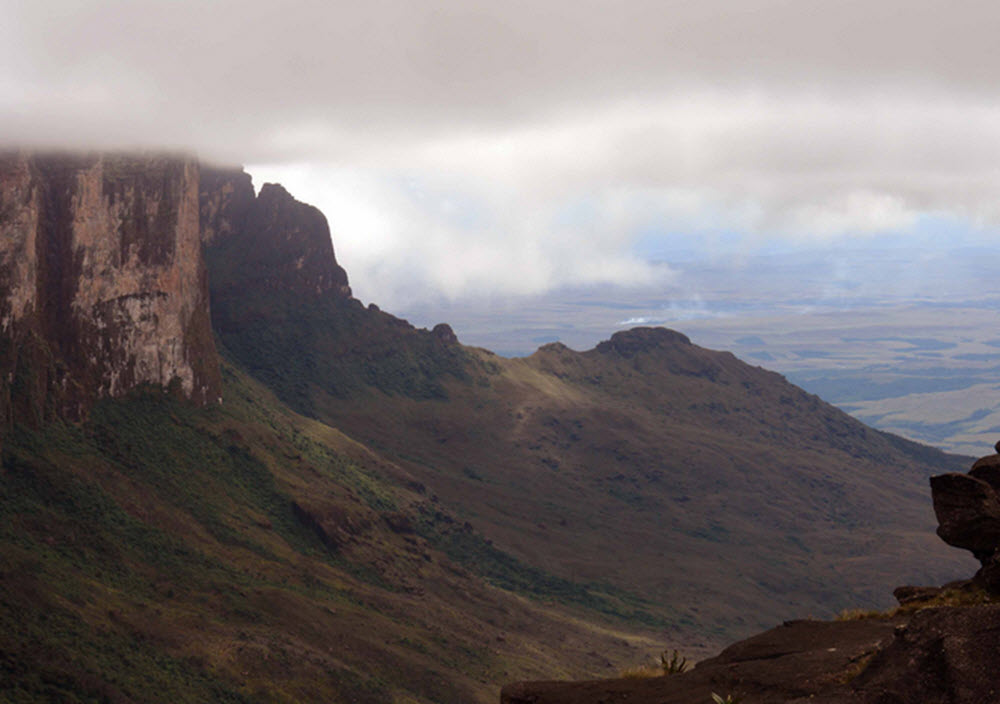Contained within the Monte Roraima National Park are the sources of such rivers as the contiguous River, the Panari River and the Irene River. It is an area full of waterfalls and rapids, tabletop mountains and treacherous cliffs.

Location
The mountains in the park are the Pacaraima, separating Brazil from its bordering countries of Venezuela and Guyana and the Tepui. Mount Roraima is located in the Tepui mountain chain and is close to 10, 000 feet above sea level. It is referred to as a “floating island” due to its cloud encircled table top formation.
The park is located in the Amazon biome in the Guyana Sheila. This is an area of Guyana called the highlands thought to be billions of years old and home to some of the most beautiful waterfalls in the world. The plateaus and mountains within the park offer a diverse ecosystem. There is about 24,000 acres of savanna along with canopied forest, woodlands and grasslands.
History
It is believed that Mount Roraima is among some of the oldest geological rock formations on earth, dating back two billion years. Monte Roraima National Park gets its name after Mount Roraima. Oddly, the mountain holds a flat top with a monument affixed to it. This is called the Marco da Triplice Fronteira, denoting where the borders of the countries of Brazil, Venezuela and Guyana meet.
In 1989 the park was established by the Chico Mendes Institute for Biodiversity Conservation ultimately to foster tourism, protect the environment and the area’s indigenous peoples. They are called the Indians of the Raposa Serra do Sol and are comprised of the Wapixana, Makuxi, Ingarikó, Taurepang and Patamona peoples.
Not until the United Nations stepped in and offered to fund the administration of the park, did the indigenous people step in to try to save their way of life. They had used the land for their livelihood for years by hunting, fishing and farming and sought to protect it. In 2005, the constitutional rights of the Indians and protection of the land was made official by making the park Union public property.
Points of Interest
The cliffs of Mount Roraima span 400 meters high and are often traversed by climbers that are expert. There also are hiking trails for multi day hikes where waterfalls, wildflowers and pitcher plants can be seen. The park offers great scenic beauty and a diverse ecosystem to behold due to the amount of rain it receives daily.
Tourists often come to see the black rocks, gorges and pools on the mountain’s summit in the park. It is visited all year by rock climbers and sightseers.
The indigenous peoples of the various tribes live unencumbered by the modern world at the Monte Roraima National Park and can enjoy their way of life. The inception of the park was originally based on this one premise, to enforce their constitutional rights and preserve the area’s natural beauty, as it has. It remains, as it has for thousands of years as a mystical and pure place in South America.
